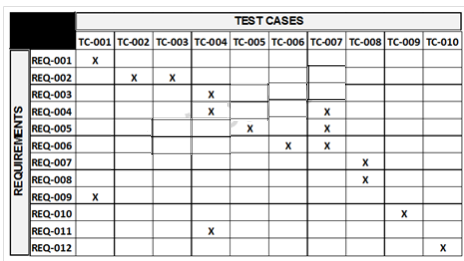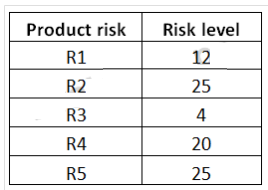iSQI ISTQB Certified Tester Advanced Level - Test Manager CTAL-TM_Syll2012 ISTQB® Exam Practice Test
Consider a defect report and assume that a part of its lifecycle includes the following states: New:
Is the initial state Working. Means that the developers are addressing the defect in order to produce a fix for the defect Clarification:
Means that the developers need more information from the tester to address the defect and produce a fix for the defect and the tester is working to provide this information to the developers Verification:
Means that a fix for the defect has been produced and the tester is running the adequate tests to verify whether the fix solves the defect Closed. is the final state Which of the following answers represents an invalid sequence of states that can't lead the bug report to the ''Closed'' state?
K2 1 credit
Answer : C
Which one of the following metrics to be produced needs traceability between the test cases and each item in a proper test basis?
K2 1 credit
Answer : A
Assume that the following test cases have been executed at the end of the first week of test execution: TC-001, TC-002 and TC-007. All these tests are 'passes'.

What is the MINIMUM number of the remaining test cases that must be successfully executed to fulfill the EX1 exit criteria?
K3 2 credits
Answer : A
During the system testing phase a tester from your test team observes a failure in the system under test and he/she decides to create an incident report. The incident report is currently in a ''new'' state, indicating it needs to be investigated.
Which THREE of the following information items can't yet be present in the incident report? K3 2 credits (2 credits out of 3 credits correct, 1 credit point)
Answer : A, C, D
Assume you are the Test Manager for a new software release of an e-commerce application.
The server farm consists of six servers providing different capabilities. Each capability is provided through a set of web services.
The requirements specification document contains several SLAs
(Service Level Agreements) like the following:
SLA-001: 99.5 percent of all transactions shall have a response time less than five seconds under a load of up-to 5000 concurrent users
The main objective is to assure that all the SLAs specified in the requirements specification document will be met before system release. You decide to apply a risk-based testing strategy and an early risk analysis confirms that performance is high risk. You can count on a well-written requirements specification and on a model of the system behavior under various load levels produced by the system architect.
Which of the following test activities would you expect to be the less important ones to achieve the test objectives in this scenario?
K4 3 credits
Answer : B
Assume that you are the Test Manager for a small banking application development project. You have decided to adopt a risk-based testing strategy and 5 product risks (R1, R2, R3, R4, and R5) have been identified during the quality risk analysis. The following table shows the risk level associated to these product risks (higher numbers mean higher risk):

55 test cases have been designed and implemented to cover all these 5 product risks. The coverage is described in a traceability matrix.
This is the test execution status table, after the after the first week of test execution:
About 56% of the planned test cases have been successfully executed.
Assume that no additional product risks have been identified during the first week of test execution.

Which of the following answers would you expect to best describe the residual risks associated with the identified product risks, at the end of the first week of test execution? K3 2 credits
Answer : D
Assume you are currently working on a project developing a system where functional
requirements are very well specified. Unfortunately non-functional requirements do almost not exist.
You are the Test Manager. You have to choose a technique for test selection that allows testing of non-functional characteristics, especially reliability.
Which of the following techniques for test selection do you expect being most useful in this scenario?
K2 1 credit
Answer : A